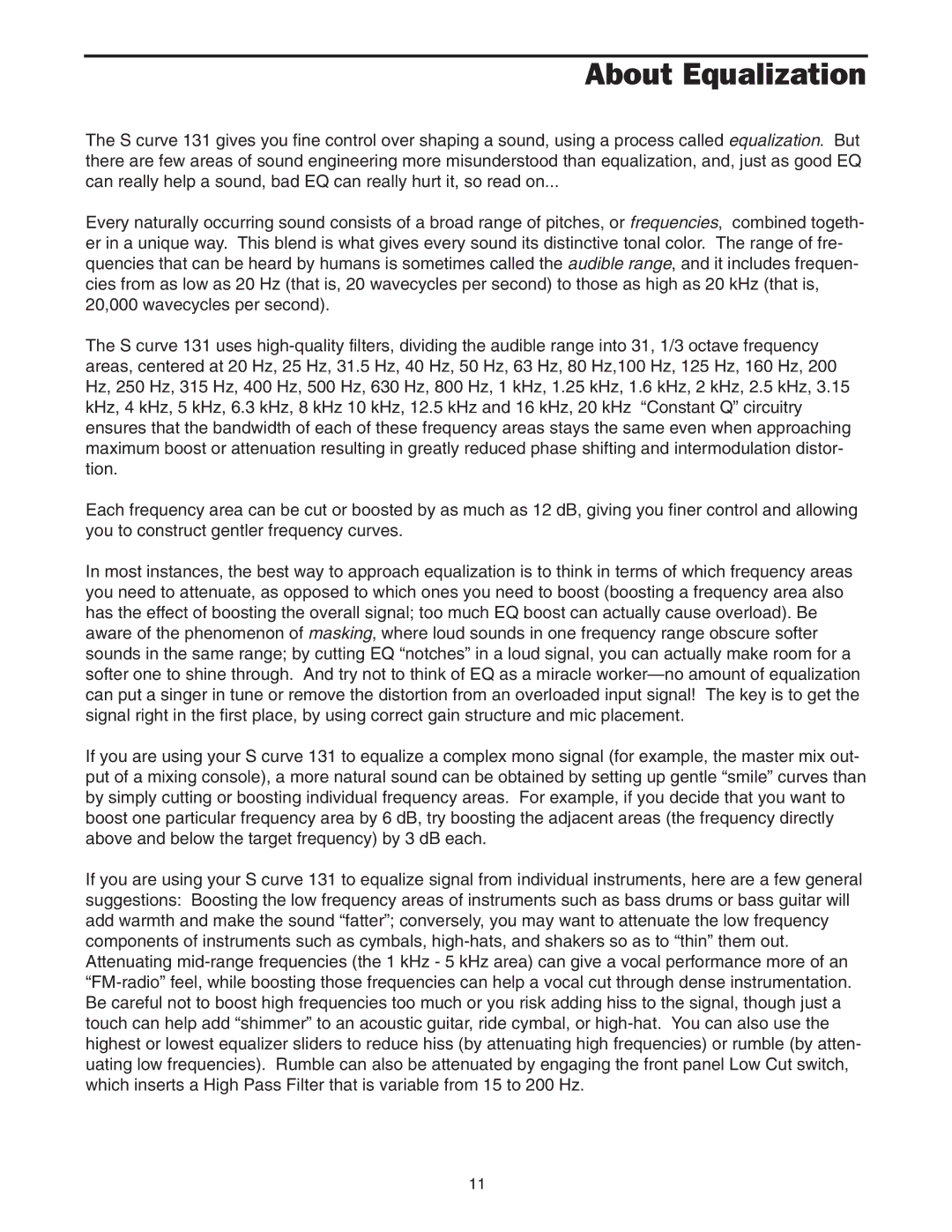About Equalization
The S curve 131 gives you fine control over shaping a sound, using a process called equalization. But there are few areas of sound engineering more misunderstood than equalization, and, just as good EQ can really help a sound, bad EQ can really hurt it, so read on...
Every naturally occurring sound consists of a broad range of pitches, or frequencies, combined togeth- er in a unique way. This blend is what gives every sound its distinctive tonal color. The range of fre- quencies that can be heard by humans is sometimes called the audible range, and it includes frequen- cies from as low as 20 Hz (that is, 20 wavecycles per second) to those as high as 20 kHz (that is, 20,000 wavecycles per second).
The S curve 131 uses
Each frequency area can be cut or boosted by as much as 12 dB, giving you finer control and allowing you to construct gentler frequency curves.
In most instances, the best way to approach equalization is to think in terms of which frequency areas you need to attenuate, as opposed to which ones you need to boost (boosting a frequency area also has the effect of boosting the overall signal; too much EQ boost can actually cause overload). Be aware of the phenomenon of masking, where loud sounds in one frequency range obscure softer sounds in the same range; by cutting EQ “notches” in a loud signal, you can actually make room for a softer one to shine through. And try not to think of EQ as a miracle
If you are using your S curve 131 to equalize a complex mono signal (for example, the master mix out- put of a mixing console), a more natural sound can be obtained by setting up gentle “smile” curves than by simply cutting or boosting individual frequency areas. For example, if you decide that you want to boost one particular frequency area by 6 dB, try boosting the adjacent areas (the frequency directly above and below the target frequency) by 3 dB each.
If you are using your S curve 131 to equalize signal from individual instruments, here are a few general suggestions: Boosting the low frequency areas of instruments such as bass drums or bass guitar will add warmth and make the sound “fatter”; conversely, you may want to attenuate the low frequency components of instruments such as cymbals,
11
